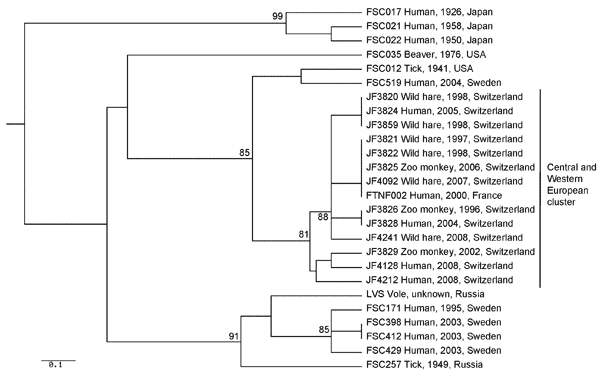Volume 15, Number 12—December 2009
Dispatch
Identification of Francisella tularensis Cluster in Central and Western Europe
Figure 1

Figure 1. Genetic relationships between Francisella tularensis subsp. holarctica strains isolated in Switzerland and strains of wider geographic origin. The unweighted pair group method with arithmetic mean phylogram is based on the combined Ftind and multiple-locus variable-number tandem repeat analysis. Bootstrap values >80% are given at the respective nodes and were calculated by using 10,000 iterations. Scale bar indicates genetic distance.
1These authors contributed equally to this work.
Page created: June 08, 2011
Page updated: June 08, 2011
Page reviewed: June 08, 2011
The conclusions, findings, and opinions expressed by authors contributing to this journal do not necessarily reflect the official position of the U.S. Department of Health and Human Services, the Public Health Service, the Centers for Disease Control and Prevention, or the authors' affiliated institutions. Use of trade names is for identification only and does not imply endorsement by any of the groups named above.